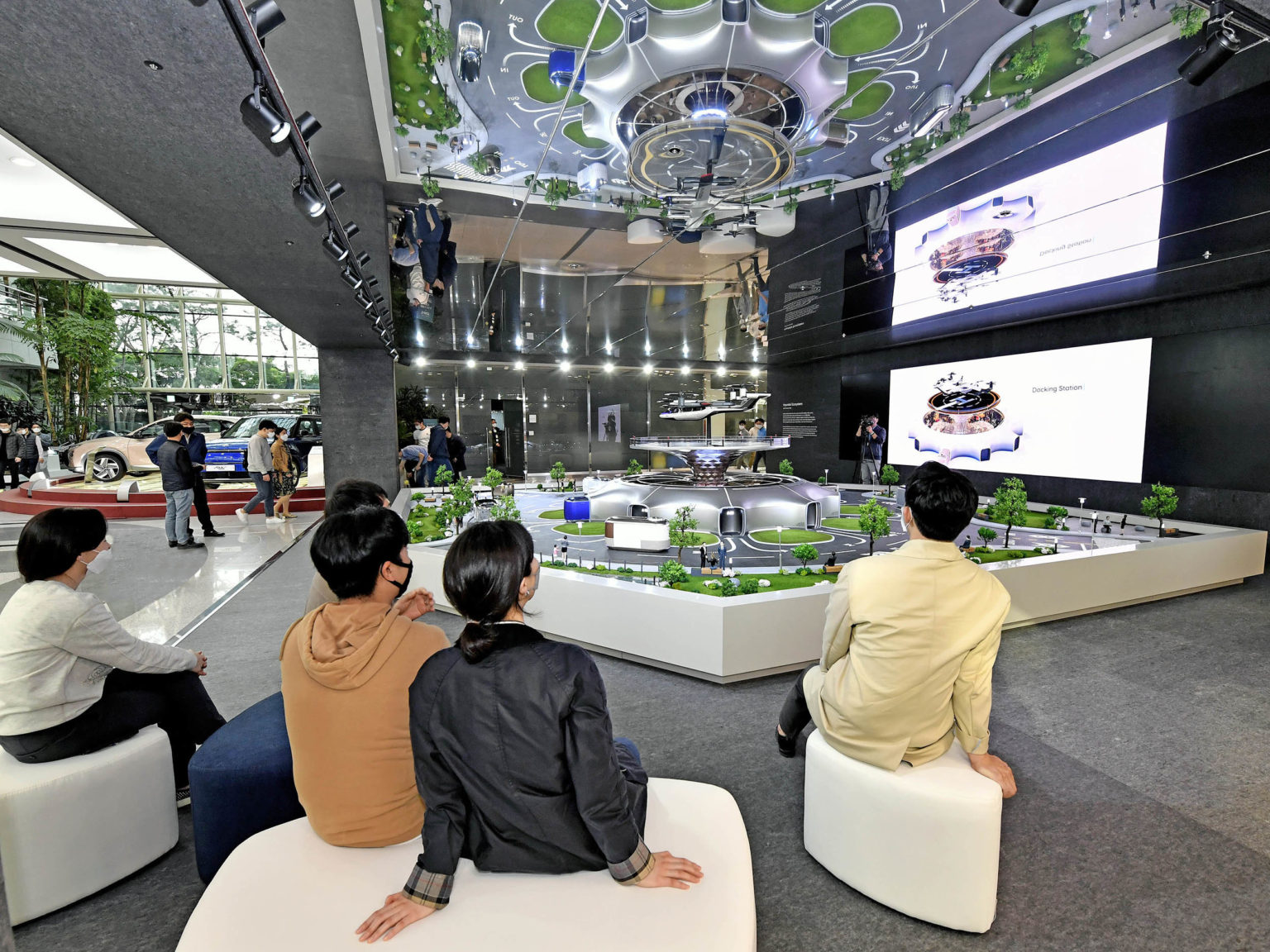When architects set about on a large-scale project, they create a miniature model of their creation in order to ascertain proper scope and impact, as well as show the project’s funders a vision. Hyundai Motor Company is doing something similar, showing off a smart mobility ecosystem in miniature in the lobby of its headquarters.
Through June 12, the 1:8-scale model on display is a miniature version of the exhibit Hyundai showed at CES 2020. It includes the integration of the Urban Air Mobility (UAM), purpose built vehicles, and mobility transit base smart mobility solution that are envisioned as part of a dynamic, human-centric future cityscape.
In the model, Hyundai is showcasing human-centric design.Photo courtesy of Hyundai Motor America
That human-centric bit is a big deal. While some futurists are predicting mass robot takeover, Hyundai is still basing its future planning around the most intelligent species on the planet.
“Hyundai’s UAM Division is leading necessary technological developments and working towards realizing the introduction of Urban Air Mobility, which has been people’s dream for decades,” said Jaiwon Shin, Executive Vice President and Head of Hyundai’s Urban Air Mobility Division. “S-A1 Personal Air Vehicle concept on display shows our dedication to bring forth Urban Air Mobility for the benefit of humanity.”
Hyundai describes the model:
“The miniature model demonstrates Hyundai’s vision of a future mobility ecosystem in urban use. The UAM is shown with its rotors tilting, enabling vertical take-off and landing and rotating horizontally for flight. On the ground, PBVs can be seen running on the road, traveling around the Hub, becoming part of the building when connecting to the Hub’s docking station. The Hub is not only a space that connects UAM and PBVs, but also serves as a new concept for connecting people, reflecting Hyundai’s determination to give people more quality time while providing seamless freedom of movement and the opportunity to enjoy diverse experiences.”
Mirrors have been installed on the ceiling of the exhibition space to allow viewers to see the exhibit from numerous angles. Videos of a future city that has been transformed through mobility solutions such as those offered in the model are playing on adjacent walls.
“For our smart mobility solutions, we considered what truly matters in cities and in people’s lives. UAM, PBV and Hub will revitalize cities by removing urban boundaries, giving people time to pursue their goals, and creating a diverse community. Our goal is to help build dynamic human-centered future cities and continue our legacy of progress for humanity. CES 2020 is just the start and we will continue to realize this vision,” said Euisun Chung, Executive Vice Chairman of Hyundai Motor Group during CES earlier this year.
Hyundai, like Toyota, is betting big on hydrogen. Hyundai has recently outlined the company’s strategy for transitioning away from fossil fuels. Toyota is going big with plans to build a 145-acre prototype city at the base of Mt. Fuji.
Once its run at Hyundai HQ is up, the company has plans to take the model across the globe to show it off.








